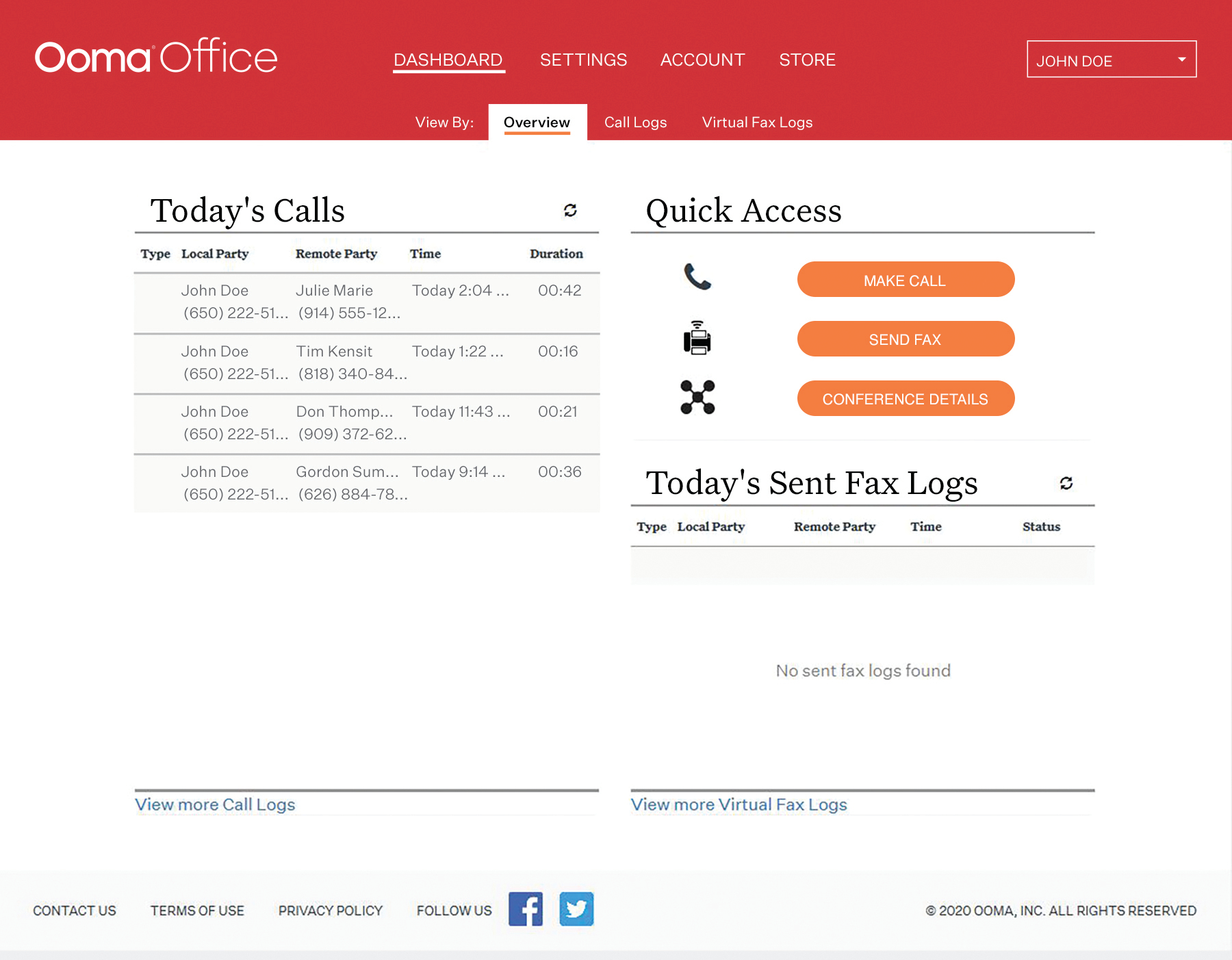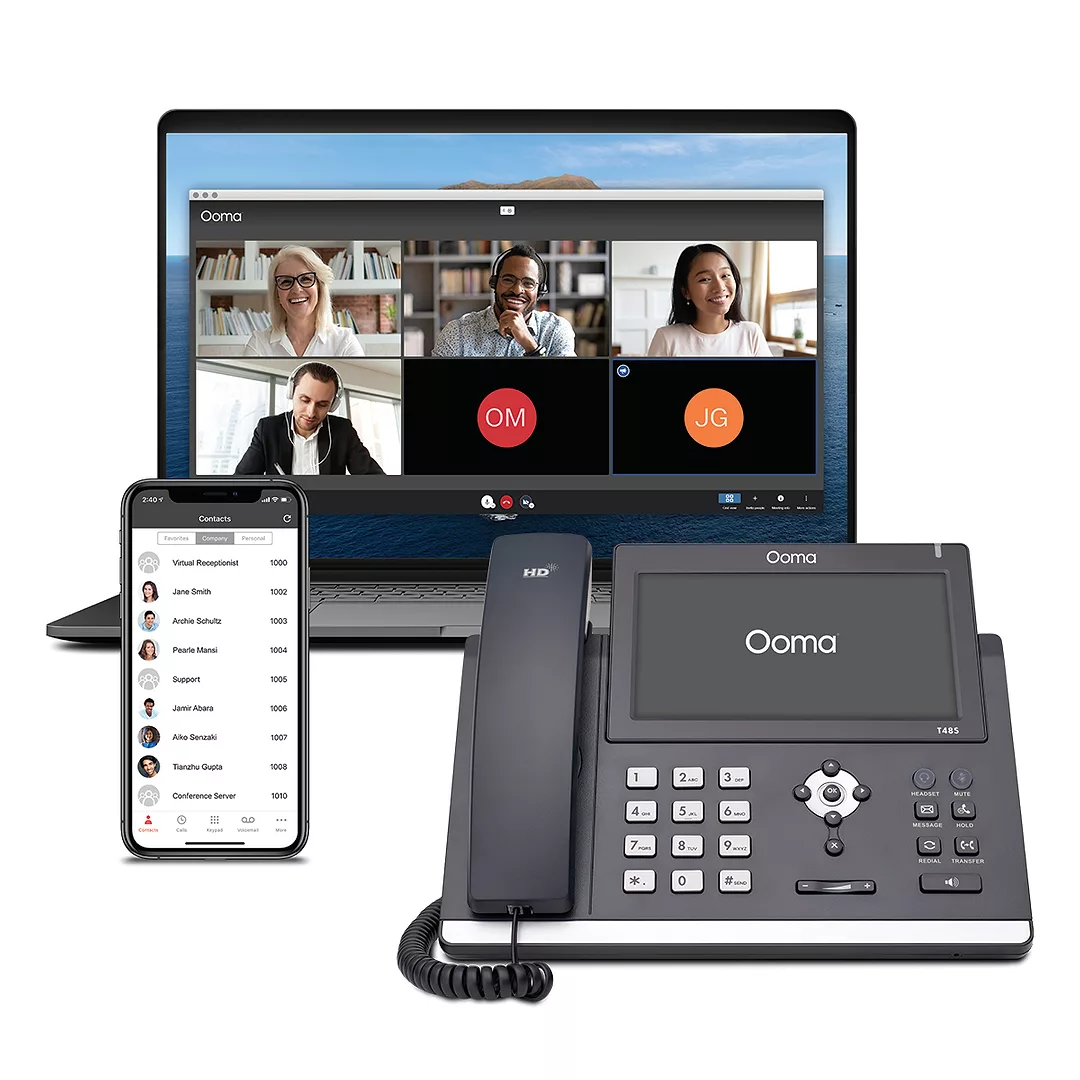Contractors today face numerous challenges given the COVID-19 global pandemic and its effects on the economy, especially on businesses. Missing calls from clients and prospects shouldn’t be one of them.
Many businesses decided to switch to Voice over Internet Protocol phone systems from traditional landlines for a myriad of reasons: the significant cost savings; the ability to work from anywhere (and still use your office phone number); and the numerous features VoIP provides.
So, is switching to a VoIP system right for you?
What are VoIP phone systems?
VoIP phones, as the name implies, use the Internet to make and receive calls. Some service providers enable you to use analog phones, but the majority provide IP (Internet Protocol) phones that can be plugged into any Ethernet jack.
Once connected, you can make and receive calls. Using a web portal and login, you can customize numerous features, including a virtual receptionist welcome message or adding new users.
The most significant difference between VoIP and landline phones is technology. Landline phones haven’t changed much since the beginning of the 20th century and require wiring and exchange hardware infrastructure. By today’s standards, landline phone technology is limited, allowing users to only make and receive voice calls.
VoIP technology has changed how companies communicate. While IP capabilities have been around for several decades, VoIP services have advanced in recent years, thanks to innovation and faster Internet speeds.
Unlike landline phones that require add-ons for features at additional costs, VoIP systems come with an array of popular communication features already built-in.

How VoIP systems work
VoIP phones work by turning your voice into data, which is then transmitted over the Internet, similar to sending emails.
If you’ve used Skype, you’ve used VoIP. VoIP calls are made on your phone, connected to the Internet with a network cable or adapter, or via a computer’s microphone and speakers using an app. When making calls, the VoIP service provider routes the voice data between you and the other caller — all within a split second.
As businesses grow, having a phone system that aligns with the publics’ expectations is critical. Unlike traditional landlines, VoIP systems come with powerful features to help companies to make big impressions, including:
1. Virtual receptionist. Missing important calls or business because your phone is busy or your greeting is unprofessional is easily resolved by a virtual receptionist. When a live person can’t take a call, the virtual receptionist takes over. Instead of hearing a busy signal or being put on hold, callers listen to a message and can be given options on how to proceed.
2. Ring groups. To ensure every caller has a positive experience, you can program ring groups to ring simultaneously so everyone in a department, such as sales, receives the call. Or you can choose for calls to ring sequentially, from person to person, until someone picks up.
3. Mobility. Staying connected to the public when away from the office is especially critical today. It’s not practical or professional for employees to use their personal number for business.
VoIP systems support working remotely through mobile and desktop apps, as well as voice messages forwarded as email attachments — allowing employees to make and receive calls from anywhere in much the same way they would from the office.
4. Conference calling. If conference calls are an integral part of your work, you understand the need for a conference phone that delivers the perfect sound. If callers find it hard to hear participants, the meeting will be challenging.
To ensure everyone experiences in-person call quality, look for a conference phone with the following features:
- A 360-degree voice range;
- An array of built-in microphones;
- Echo cancellation background noise suppression.
5. Virtual fax. Faxing remains an important form of communication for many offices. With VoIP phone systems, you can still send traditional faxes from your phone to a fax machine. Virtual fax removes the need for fax equipment. Faxes are converted to PDF files and managed within the end-user portal. Each user who needs access will have fax capabilities via their phone extension. The account manager can review the logs to track all virtual fax activity.
6. Keep existing phone number. Keeping your office phone number, your lifeline, makes the transition to an IP system seamless. The moment you plug in your phones, you’ll be able to make and receive calls. No need to change business cards, letterhead and website information. Your VoIP service provider can take care of moving your number to your new system.
Understanding VoIP basics
VoIP PBX stands for private branch exchange and is a company’s private phone network. VoIP PBX is a cloud-based phone network that a VoIP service provider manages in the cloud and one where companies pay a monthly fee to use the service.
Ethernet is the Internet delivery system within a local area network — as in the network of computers and devices in your office. You’ll connect your IP phone units to the Internet with an Ethernet cable.
Setting up a business VoIP system takes minutes. One of the differences businesses notice when switching to a VoIP system is the reduction in on-premises equipment. Traditional business phone systems require the installation of large wall-mounted fixtures, followed by upgrades and IT servicing.
With VoIP systems, the hardware generally consists of one or two compact, plug-in pieces. When it comes to switching your phones to VoIP, you have device options. You can continue using your existing analog or digital desk phones or if you’d like to upgrade, you can purchase IP phones.
Once your desk phones and starter kit arrive, follow a few simple steps:
- Connect your base station (a tablet-sized router that sorts out voice data and traffic to ensure clear, reliable calls) to your analog phone.
- Plug in wireless extensions (into regular power outlets) to connect analog phones to the Internet.
- Connect IP phones to an Ethernet jack.
Key advantages of VoIP systems
First impressions: How customers and the public perceive your business often depends on their initial phone interaction. Will they hear a welcome message with easy directions or be put on hold immediately? Whether your company has 10 or 200 employees, your business will sound professional with a VoIP phone system.
Excellent call quality: With technology advances and increased Internet speeds, your VoIP phones will provide the call quality you need.
Reduced costs: Lower costs are one of the most appealing benefits of switching to VoIP systems. Those with landlines understand the significant expense — setup fees, monthly charges, per-line expenses, etc. — all add up, including IT support. To calculate how much you could save by switching to a VoIP system, use a VoIP savings calculator (https://bit.ly/2RM6fMY).
Connect with remote teams: Employees today are working everywhere. A VoIP system provides the tools to communicate with staff effortlessly – no matter where employees are.
For a deeper dive on VoIP, download a free VoIP Guidebook (https://bit.ly/2TY8vkT).
Ken Narita’s marketing career spans two decades of helping businesses large and small grow. He has led demand generation, field marketing, customer marketing and marketing operations teams, integrating campaigns across all functions to drive results. For more information, visit www.ooma.com. For questions or comments, please email [email protected].





